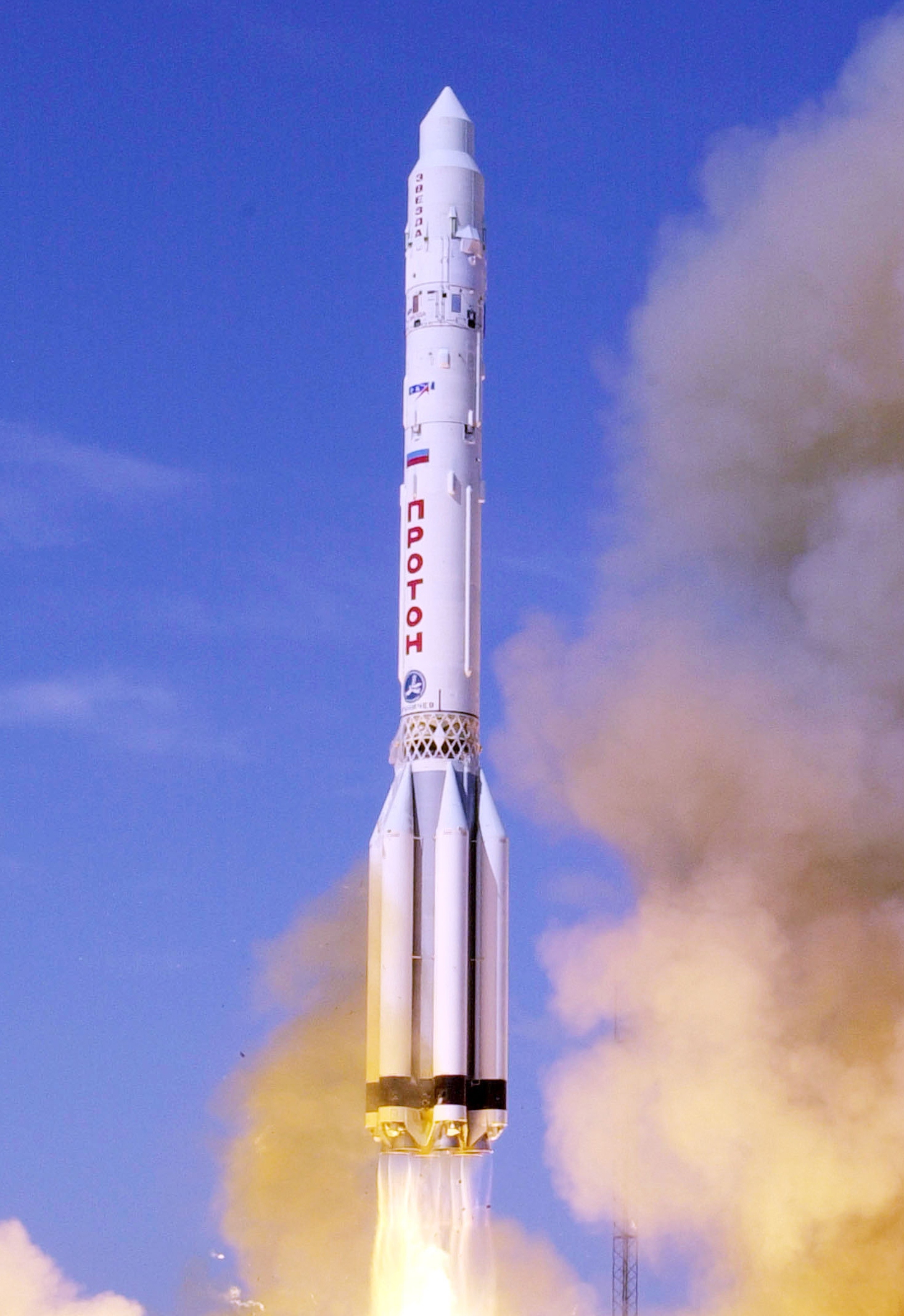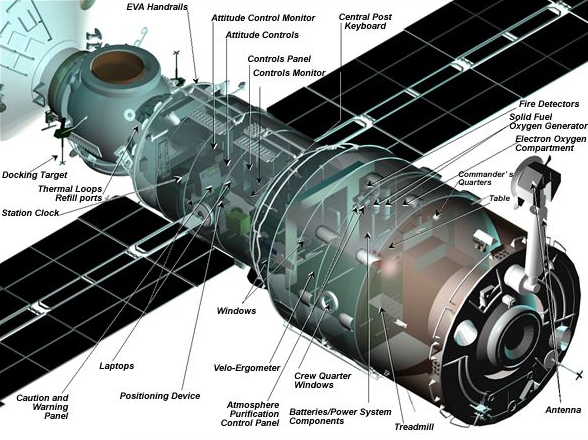Sixty years ago today — June 27, 1950 — “Destination Moon” premiered in New York. Produced by George Pal and partly written by SF Grand Master Robert A. Heinlein, it was one of the first films to realistically depict a trip to the moon. This Wikipedia article goes into more detail about the movie and its influence.
Forty-five years later, on this date in 1995, the Space Shuttle Atlantis launched from the Kennedy Space Center on mission STS-71, to a destination no shuttle had ever visited before: the Russians’ Mir space station. U.S. astronauts Robert L. Gibson, Charles J. Precourt, Ellen S. Baker, Gregory J. Harbaugh, and Bonnie J. Dunbar traveled to Mir along with cosmonauts Anatoly Y. Solovyev and Nikolai M. Budarin.

(STS-71 launch. NASA image.)
STS-71 was the 100th human spaceflight launched by the U.S., and represented the first time part of a shuttle crew changed out while in orbit: Solovyev and Budarin as the crew of Mir increment 19, while the Mir 18 crew — astronaut Norman E. Thagard and cosmonauts Vladimir Dezhurov and Gannady Strekalov — boarded Atlantis for the ride back to Earth.
Now, if we could only get back to heading for destinations like the moon …



 by
by 

















